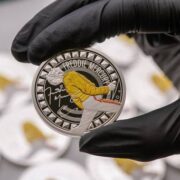The American utopia

Donald Trump’s rise in American politics has rested largely on his image as a savvy businessman who claims to know how to make America great again. That vision continues to strike a deep chord with many Americans who lived through the collapse of American manufacturing. But the America they long for—the one of humming factories and working-class abundance—is gone. It cannot be revived. It is, in the literal sense of the word, utopia: a longed-for place that no longer exists.
I caught a glimpse of that promised land on my first visit to the United States in 1971. Traveling from England, where I was a graduate student, I stayed with hardworking Kapampangans who had migrated to New York and Los Angeles. Many worked two jobs to afford the commodity-laden American lifestyle.
Before returning to Manila, I had two items on my list: a pair of Levi’s jeans and pigskin Hush Puppies shoes. They weren’t cheap—but they were “Made in the USA.” That label seemed to capture the essence of America then: authentic, durable, and self-sufficient.
Fast-forward 40 years. A visitor to Costco or any outlet mall would have a hard time finding Levi’s or Hush Puppies not made in China or Vietnam. The same holds true for nearly all the iconic American brands—Nike, Converse, Calvin Klein, Gap, Vans, Under Armour, North Face. These companies may still be headquartered in the US, but their production lines have long since moved overseas.
Most of these firms remain American-owned, though many now operate as subsidiaries of larger publicly traded conglomerates. VF Corp., for instance, owns Vans, The North Face, and Timberland. Nike Inc. owns both Nike and Converse. This is the terrain of global capitalism—one that China entered decisively when it opened its doors to foreign investments. Today, it is no longer just the world’s factory. It is a formidable player producing its own brands alongside those it manufactures for others.
China’s rise as a manufacturing powerhouse did not happen overnight. Nor was it hidden. American corporations were among the first to rush in, lured by China’s vast labor pool and low production costs. Profits soared. Consumers, too, welcomed the influx of affordable goods—especially as Chinese-made products improved in quality. The downside, of course, was the shuttering of American factories and the dislocation of workers. But this was shrugged off as part of globalization’s inescapable churn.
At the level of US policymakers, China’s integration into the global economy was seen as an ideological triumph for America and the West. A liberalized Chinese economy, they believed, would eventually usher in political reform. And anyway, a post-Mao China would take a century or more to catch up—too long to pose a real threat to American dominance.
That assumption now seems hopelessly naive. Rather than liberalize, the Chinese Communist Party consolidated its rule. It purged corrupt officials from its highest organs, kept a firm grip on the state, and launched an ambitious program of long-term strategic development. Rather than reinvent the wheel, China sent its best students to study in the world’s top universities—mostly in America—and required them to return when their country called.
They built roads, ports, bridges, airports, and power grids. They upgraded their schools, polytechnic institutes, and universities. They encouraged private enterprises while strengthening state-owned firms. They adopted advanced technologies from abroad, modernized agriculture to achieve food security, and locked in long-term access to critical raw materials—especially rare-earth metals essential to emerging industries.
Trump’s nostalgia for American industrial greatness is misplaced. Manufacturing—on the scale and profitability once seen in the US—is no longer America’s comparative advantage. Its strengths now lie elsewhere: in services such as higher education, medicine, digital technologies, design, and innovation. Ironically, these are the very sectors being eroded by Trumpian policies—through budget cuts, anti-science rhetoric, and a politics of grievance that shrinks the national imagination.
The American utopia that Trump longs to restore does not exist anymore. What remains is a vastly changed world economy—one in which greatness will not be reclaimed through tariffs or populist slogans, but through reinvestment in the very assets that still set America apart.
—————-
public.lives@gmail.com





















